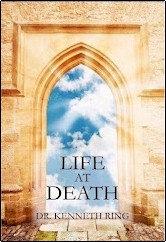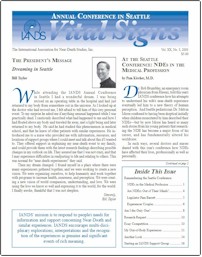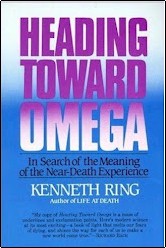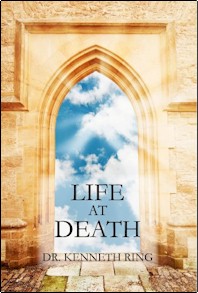In the summer of 1976, I was mired in the waning and turbulent days of a disastrous marriage, which would soon implode in violence and mayhem, causing me untold anguish as I reeled from the centrifugal winds that blew my marriage and my life to bits. But, fortunately, that’s not the personal history that’s relevant here, though for drama and trauma, it certainly made that year a pivotal one in my life. But a few months earlier, something else happened that would prove to be even more monumental for me, a life-changing event from which I would never recover.
I remember the day it happened. It’s still vivid in my mind. I was sitting outside my house at the time, a few miles down the road from the University of Connecticut. It was summer and the weather was sunny and pleasant. I was reading a book. Hardly anyone had heard of it. Its author was a psychiatrist whose name was unfamiliar to me: Raymond A. Moody, Jr. The book, of course, as you now will have realized, was Life After Life.
It’s funny how sometimes things just slide into place without one’s lifting a finger, so to speak. Because what happened next, just within a day or three, is that several of my students – I had a small coterie of devoted students then – came by and in effect asked me what I was up to these days. “Funny you should ask, “I might have said, but didn’t. But when I told them what I had in mind, they picked up on my enthusiasm and asked if they could get involved. In short order, I had the makings of a research team, which would soon expand to more than a half dozen students, mostly undergraduates.
Meanwhile, I was already hard at work drafting a grant proposal. My plan was to see if I could work with a number of hospitals in the Hartford area and, with their consent, get referrals to patients who had come close to death. I was both surprised and delighted soon to learn that the University Research Foundation approved my proposal and had funded it fully. Surprised because, remember, at that time hardly anyone had heard of NDEs or if they had were not likely to give them any credence. Nevertheless, I was off and running – to Hartford.
Before long, I had made contact with the appropriate administrators and physicians at three hospitals in Hartford (as well as several other potential sources of respondents) and gave my first lecture at Hartford Hospital to discuss NDEs and my proposed research. Again, I was surprised that the response I received was so positive. People came up afterward to say they would be happy to help me. Another door opening for me with my barely touching it. I am no great scholar, God knows, but I do have – or did have – charm in those days, and I think that helped to persuade the powers that be that I would not bring disgrace to their institutions.
Soon I was striding the halls of Hartford Hospital, wearing a while lab coat, as if I were a “real doctor,” on my way to interview patients who were recovering from a serious near-death incident. Of course, I had no idea whether they had had an NDE. All I could know is that they had apparently been close to death. But with my third patient, I hit pay dirt. To this day, I remember her name – Iris Lemov – who had had a close call owing to a severe case of Crohn’s Disease. Iris confided in me that she did experience something unusual when she was very ill and went on to describe a classic Moody-type NDE. I could hardly conceal my excitement. I was finding exactly what Moody had reported in his book, Life After Life.
Originally, I had thought I would train my students, especially my graduate students, to conduct most of these interviews, but after doing a few of them myself, I decided that I wanted to do as many as possible. In the end, I wound up interviewing about three-quarters of my sample of 102 persons who had come close to death.
Most of the people I eventually interviewed were no longer hospitalized, however. Instead, I would bomb around the state of Connecticut in my trusty Dodge Dart to conduct my interviews and then play the tape on the way home. I can’t begin to describe the profound emotions I felt doing these interviews as people recounted, not infrequently with tears streaming down their faces, what they had experienced when close to death. Often, I was the first person to hear their story. There was usually a feeling of a sacred encounter taking place between us as people shared with me what they claimed to be the most important thing that had ever happened to them. I felt both privileged and blessed to be entrusted with the story of their most treasured, if sometimes perplexing, near-death episode.
After spending thirteen months tracking down and interviewing my respondents, one day I was sitting outside on the back deck of the house where I was then living, working at a picnic table, tabulating and analyzing my data. And with paper and pencil, if you can believe it. Remember, this was in the late 1970s at a time before computers were common, and when there was no Internet and when no one had ever heard of a cell phone. We were still in the typewriter age then.
But I remember that day because my then girlfriend Norma came over, and I still recall what I said to her when I looked up from my data sheets. “No one is going to believe this, Norma. I am sitting on dynamite!” I already knew that I had struck a vein of gold.
Not long afterward, one evening in 1977, I was in my kitchen, stirring some cream sauce, when the phone rang. Still stirring the pot, I reached across for the phone and heard an unfamiliar voice on the line speaking with a southern accent.
“Hello, Ken? This is Raymond Moody.”
“No shit?” I replied.
I stopped stirring my cream sauce.
Raymond wanted to invite me to Charlottesville, Virginia, where he then lived. Several researchers of whom he had heard were following up on his work, and someone had drawn his attention to me. That someone – a sociologist colleague of Moody’s named John Audette – would soon be in touch about the arrangements, but meanwhile Raymond was hoping I could come down.
Could I!
On November 19, 1977, one of my research associates, Sue Palmer, who had been of inestimable help to me in carrying out my original research, and I loaded up my car and headed down to Virginia where I would meet not only Raymond, but several other professionals who would come to play key pioneering roles in the development of the field of near-death studies – in particular, Bruce Greyson, Michael Sabom and John Audette, all of whom were to become close colleagues of mine. Everything of importance really began from that first meeting. And one of the most significant decisions to come out of that meeting was the intention to form some kind of professional association to promote the scientific study of NDEs.
Some months later, in August, 1978, Greyson, Sabom, Audette and I met at a conference where we established an organization to further the professional study of NDEs, which Audette headed for a couple of years. We gave it a stuffy, high-flalutin academic name: The Association for the Scientific Study of Near-Death Phenomena. The reason for doing this was to try to interest other professionals and academics in the study of NDEs.
Here’s what we looked like at that time. The bespectacled guy in a suit on the left is me; above me is John Audette. Next to him is Bruce Greyson and then Mike Sabom. We had a dream….
Meanwhile, I was working furiously to complete my book, Life at Death. I was lucky enough to find an agent for it and before I knew it, I learned that there was actually a bidding war going on for my book. I was amazed because I was at the time a completely unknown author – just a professor of no particular distinction and no professional reputation at all. Nevertheless, my book seemed to be a hot commodity and I finally accepted an offer from a then well know publisher. My editor soon became the head of the publishing firm, and I was thrilled to have her to advise me. I still remember how she courted me. She took me to “her table” at the fabled Four Seasons restaurant in Manhattan. I remember only one thing that happened at the outset of our lunch that day. She reached across the table, and solemnly placing her hand on mine, told me, “This is just the beginning, Ken.”
Wow, who me? But in a way, she was right. She quickly set up an extensive book tour for me, and in those days there were many television shows where authors like me would be invited to hawk their books. Before long, I was a guest on all the popular network shows of that era – Good Morning America, The Today Show, Donahue, Larry King, and so many more – dozens, probably, and radio shows, too. I was interviewed by then famous anchors, such as Tom Brokaw, and met other celebrities who were also guests on those shows. My biggest thrill was meeting some baseball heroes of my youth – Yankee pitcher, Whitey Ford, and Los Angeles catcher, Roy Campanella. I also recall being with Carol Channing (“Hello, Dolly!”) in the green room of one program where she looked – no disrespect – like a old hag. Until she went on when she was transformed into the dynamic stage star she had long been famous as. It was a heady time for me. My fifteen minutes of minor celebrity. I tried not to let it go to my head, which fortunately remained firmly attached to my neck. That wasn’t too hard because my book never became a best seller, though it did respectably. But after that, I was often “in demand” and had more offers for speaking engagements than I could accommodate.
Now back to earth.
Late in 1980, after my whirlwind book tour was over, John Audette asked me if I would take over the organization he had been heading and run it “for a year” while he devoted himself to NDE research. I agreed, but with conditions. I wanted to re-name it and call it The International Association for Near-Death Studies (IANDS) and make it into a dues-paying membership organization. I also would establish a headquarters for it at The University of Connecticut, where I then taught, and found a scholarly NDE journal, etc. All of which I was able to do, thanks to the invaluable support of Greyson and Audette -- and a lot of help from my friends and probably a few angels as well. Anyway, after my meeting with Audette, I went to work.
We had fun, we had a wonderful esprit de corps, though some weeks I worked a hundred hours between running IANDS, teaching at the university, editing our journal, and shooting my mouth off at lectures around the country. I was young then. We had a ball, and we didn't spend a cent on salaries. That was what IANDS was like in the early days. Nothing would have been possible, though, without the tireless and devoted help of those students. And those angels who must have guided our efforts.
But my NDE life was not confined to the university. No, it had already spilled over to my home, which I now shared with my then love, Norma, and our children (from our previous marriages). At that time, we lived in a beautiful old house on the banks of the Mt. Hope River. The house had a storied history from colonial times (guess who was rumored to have slept there?) and had once been a converted inn. We came to call it “The Near-Death Hotel,” and sometimes, as a joke, hoisted up a banner on the porch between the house’s stately pillars with that name proclaimed for all the neighbors and passersby to gawk at.
My home soon became a kind of informal center for near-death studies. Steve Straight lived there for a couple of years as did a nurse from Spain, Maria Castedo, who was passionate about NDEs. (I have remained in touch with them both.) As for Norma, who was really the heart of the near-death hotel, we lived as man and wife though we never married. (After three failed marriages, I had promised my daughter, Kathryn, I would never marry again.) But since everything was near-this and near-that, Norma became my “near-wife.” She was a woman who loved to hug and had a piquant sense of humor, too. She once suggested that if I were ever to write my autobiography, I should call it Wife After Wife.
Once my book had come out, NDErs from all over sought me out and quite a few eventually arrived and stayed with us in what we came to call “the near-death room.” Some of these persons were memorable characters. There was Patrick Gallagher, who had once been a distinguished university professor of anthropology, but after his NDE, became a kind of Whitmanesque character bumming around the country.
You see, one morning I woke up with a near-death ditty on my mind. I remember that day, too, because the lyrics for the song came, like Athena from Zeus’s brow, virtually fully formed without my having to do more than write them down. Sung to the tune of Gene Autry’s theme song, “Back in the Saddle Again,” it went like this:
Seein' my future and my past
Floating through tunnel now,
I look around say, “oh wow!”
It’s so peaceful here,
I don’t feel no kind of fear.”
Just driftin’ and singin' my song
Oh Lord, why's this tunnel so long?
Is that a golden light I see?
The face of God shines through
And I’m headin’ straight for you
(In a basso profundo, as befits God)
And your family and friends need you, too
So I'm sending you back
One more chance to get on track
You'll come to me later
(Ritardando) On my cosmic elevator
(In a natural but awed voice)
Wonderin’ what happened just then
Was that the Lord above
Did I just imagine all that love?
I reckon I'll know one day for sure
(Ritardando) I reckon I'll know one day for sure
[Da-dum (dominant-tonic) on the guitar....]
Sometimes when we would have an IANDS board meeting at my home, I would be asked to sing that song before we got to work. It always got a laugh and put us in a good mood. But I also took it on the road. Once I sang it close up to Elizabeth Kubler-Ross at her farm in Virginia. Another time, at the Omega Institute in New York, where I was doing a workshop, I had the chance to sing it to Pete Seeger, who looked completely baffled (he had no idea what I was singing about) as well as to Bobby McFerrin, who seemed amused. Somebody eventually told me that someone had brought the song to the attention of Willie Nelson who said he wanted to record it, but of course he never did.
I had no shame singing it on occasion at some of the conferences I attended at the conclusion of my lecture. I remember once, in Prague, in front of an audience of 2000, I sang it and got one of the few standing O’s I’ve ever received. I don’t know how my talk was received, but my song was a hit!
Which brings me back to Blaine, who was a musician and guitarist. Naturally, I sang it for Blaine, and it inspired him to write his own near-death songs, which he would then perform at local clubs. I remember he had one called “The Near-Death Hotel,” and another, “Tiptoe through the Tunnel.” Blaine stayed with us for a month, too.
Raymond Moody never had much interest in IANDS as such, but of course we all were very fond of Raymond, who was a delight and has a marvelous sense of humor. He would often crack us up with his wit when he made fun of southern preachers, enacting the role of “Brother Raymond.” Sometimes we’d all troop down to his farm in Virginia to hold our board meetings there. Here’s a photograph of “the four amigos” with Raymond who loved to sit in his rocking chair during these affairs:
In those early days of IANDS, when I was serving as its President and genial dictator, I was also doing my best to raise funds for the organization since, I must confess, most of our board members didn’t do squat in that regard. I never liked having to make a pitch for IANDS with potential wealthy benefactors, but it did give me the opportunity to spend time with the moneyed crowd in Palm Beach, with politicians like the longtime senator from Rhode Island, Claiborne Pell, and with his pal, one of the princes of Lichtenstein. And then there was a wealthy man of mystical leanings in Malibu where he lived in a palatial house once owned by the Aga Khan who had been married to the actress, Rita Hayworth. When I stayed there, I slept in a vast bedroom called “The Rita Hayworth” room. This man had a large following of Hollywood types and minor celebrities, like “Miss Oil of Olay,” next to whom I sat at one lavish dinner, and a runner-up in a Miss America contest. It turned out this man was a leader of some kind of cult, but when I declined to be initiated, he booted me out.
Well, those were the days, my friends, but they had to end, at least for me. After serving two terms as President of IANDS, I was due for a sabbatical and asked Bruce Greyson to relieve me of the responsibility of editing our NDE journal. He not only consented, but edited it for the next twenty-five years and turned it into a first-rate scholarly journal. Meanwhile I returned to my research, writing, lecturing and my day job as a professor at UCONN.
Here’s a photo of Bruce and me from those days, which was taken at one of those board meetings. Brothers, we were:
As for me, I’m back in the saddle again, just riding a different horse until I get to that last round-up in the sky.
Note: As I will be undergoing surgery on December second and will be out of commission for a couple of weeks afterward, I won’t be able to respond to any comments after the 2nd for a while, though I am always happy to receive them. This will also be my last blog of the year, and I’m not sure I will continue to write more next year. So let me just take this opportunity to thank you for reading my musings over the past couple of years. I hope you found my blogs amusing and entertaining and maybe, occasionally, more than that. Best wishes to all!




























